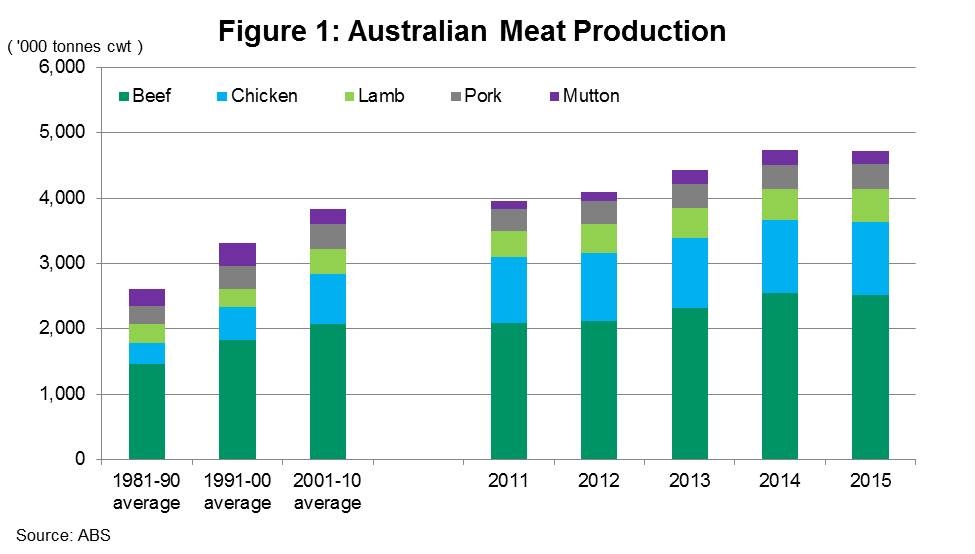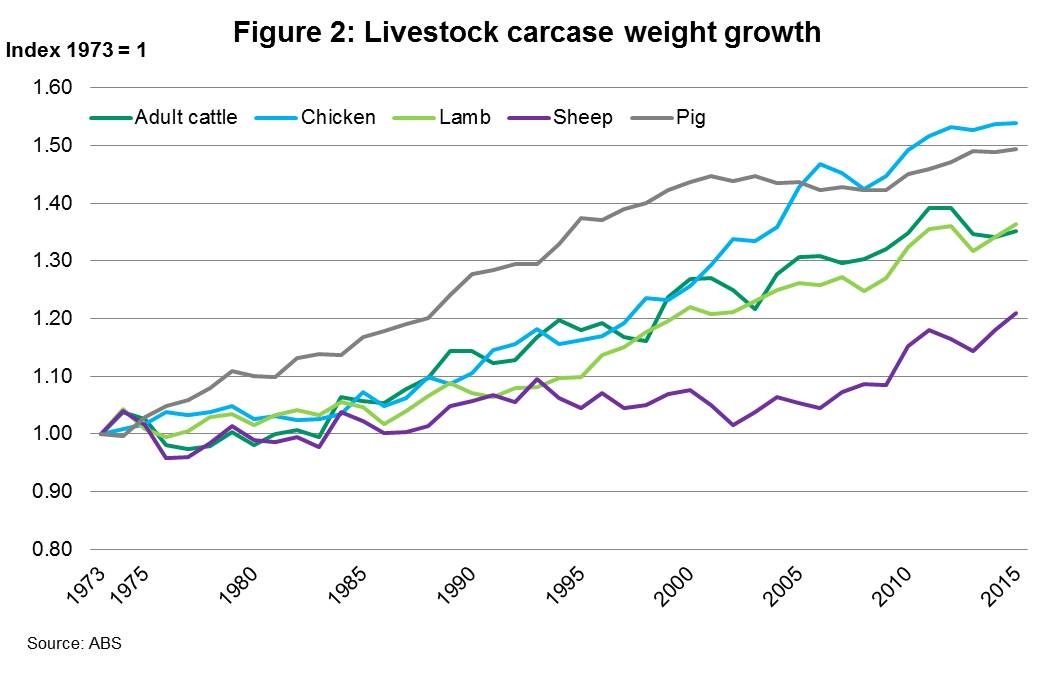The shifting dynamic of Aussie meat production
With a restricted pool of natural resources, efficiency gains have driven the increase in Australian meat production over the last four decades. It went largely unnoticed, but in 2014 Australia produced a record amount of meat (excluding fish), with 4.81 million tonnes recorded (Australian Bureau of Statistics). 2015 was close, with record chicken and lamb production, but the fall in cattle slaughter resulted in overall meat production declining 1%, to 4.76 million tonnes swt.
Figure 1 illustrates the breakdown of meat production by species and the increase over recent decades. While beef remains the dominant animal protein produced, the growth in chicken, up four-fold on what was recorded in the 1980s, has been the most significant contributor to the increase in overall meat production. Chicken has gone from a 12% share in the 1980s, to now account for 23% of total Australian meat production.

In 2015, Australian produced:
- 2.51 million tonnes cwt of beef, 16% above the ten-year average
- 1.21 million tonnes cwt of chicken, 22% above the ten-year average
- 509,000 tonnes cwt of lamb, 20% above the ten-year average
- 374,000 tonnes cwt of pork, 4% above the ten year average
- 202,000 tonnes of mutton, 1% below the ten-year average
- 32,900 tonnes cwt of veal, 9% below the ten-year average
- 32,700 tonnes cwt of goatmeat , 33% above the ten-year average
The lift in meat production has largely been underpinned by efficiency gains, reflected, in part, by the increase in carcase weights across all major species, as illustrated in Figure 2.

Even though Australia processed more cattle during the beef crash in the 1970s, with the kill exceeding 10 million head in 1977 and 1978, current carcase weights are about 75kg heavier, and beef production over the past two years was about half a million tonnes greater than the record slaughter years in the late 1970s.
Lamb is a similar story, with the increase in carcase weights since 1990 accounting for 100,000 tonnes cwt of the half a million tonnes cwt of lamb produced in 2015.
Both beef and lamb production are forecast to decline in 2016, back 13% and 2% year-on-year, respectively. However, average carcase weights are expected to increase into the future, with adult cattle carcase weights projected to approach 295kg and lambs projected to reach 23kg by 2020, which will underpin future red meat production growth.
The increase in animal protein production has been a trend occurring in many parts of the world, and the United States Department of Agriculture (USDA) has forecast meat production in numerous countries to increase this year. For 2016, the USDA has projected:
- Global beef and veal production to increase 1.3% year-on-year, to 59.20 million tonnes cwt
- Pork production to increase 0.5%, 111.96 million tonnes cwt
- Chicken expected to increase 1.6%, to 89.34 million tonnes cwt
Click here to access historical slaughter and production data from MLA’s Statistics Database.



